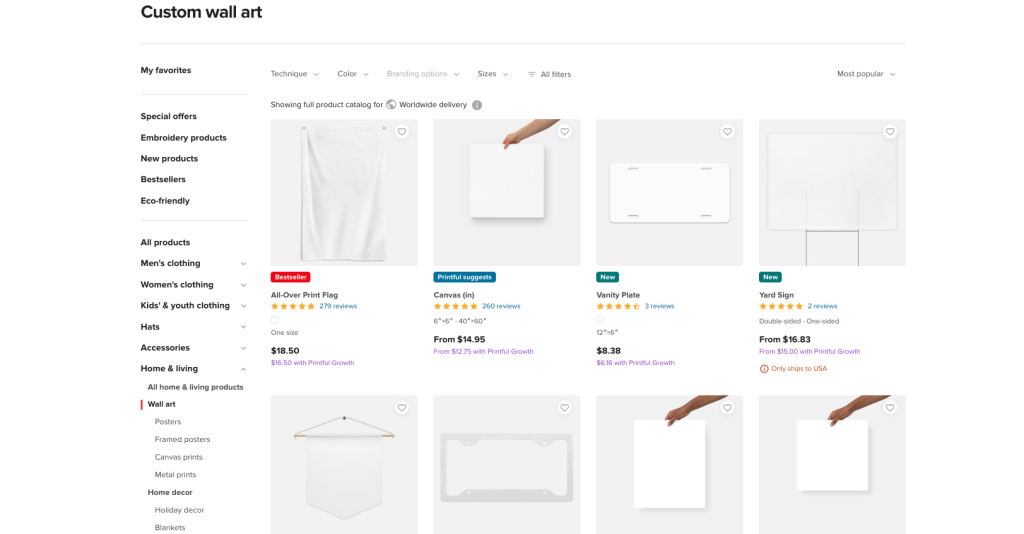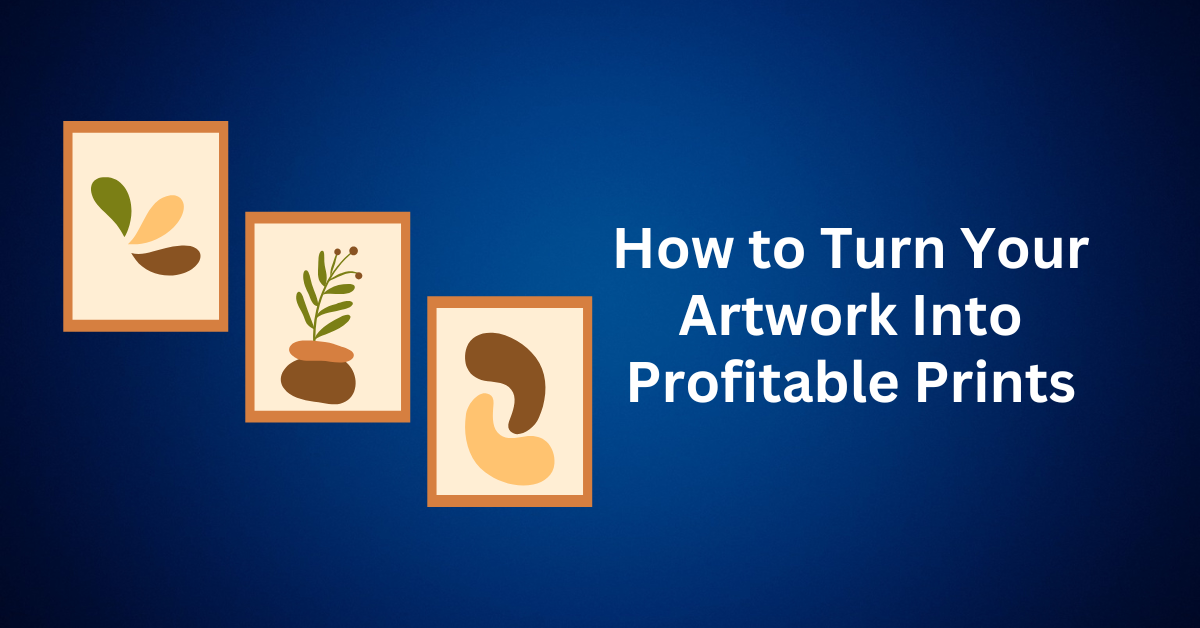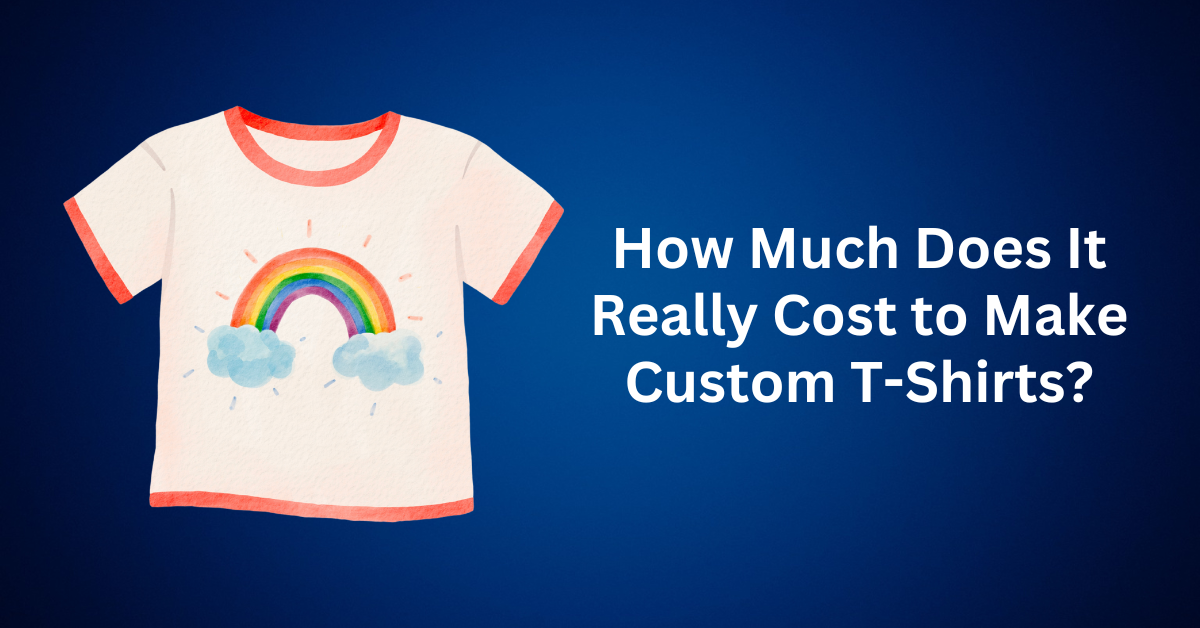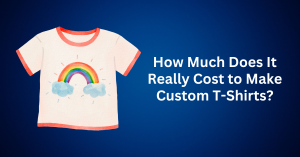Got a collection of artwork gathering dust in your studio or sketchbooks tucked away in drawers? If so, it’s time to unlock their earning potential. By selling prints of your art, you can turn your creativity into a steady source of passive income, expand your audience, and make your work more accessible—all without parting with your original pieces. In short, it’s a smart and sustainable way to share your talent with the world while building your artistic brand.
In this comprehensive guide, you’ll learn exactly how to make prints of your artwork and start selling them confidently. Whether you’re working with acrylics, watercolours, pencil sketches, or digital illustrations, we’ll break down the tools, platforms, and strategies you need to succeed in the growing art print market.
Table of Contents
ToggleWhat’s the Difference Between Original Artwork and Prints, and Why It Matters
Before launching your print business, it’s essential to understand the key distinction between original artworks and prints. This knowledge helps you set realistic pricing, manage customer expectations, and position your work strategically.

What Is Original Artwork?
Originals are one-of-a-kind pieces, created entirely by hand or as a single digital composition. These works are often more expensive due to their rarity and the direct connection to the artist’s process. Buyers of original art are usually collectors, enthusiasts, or interior designers seeking something truly unique. Originals often carry investment value and emotional significance.
What Are Art Prints?
Art prints are high-quality reproductions of an original piece, typically produced through professional printing methods like giclée, inkjet, or offset printing. These can be printed on various media such as fine art paper, canvas, or even metal.
Prints make your work more accessible to a broader audience by offering a lower price point while still maintaining visual integrity. They also give you the ability to sell a single artwork many times over. If you want to strike a balance between accessibility and exclusivity, consider offering limited-edition prints, where each piece is signed and numbered, adding value and scarcity.
Why Sell Artwork Prints?
The art market is rapidly evolving, and digital transformation has created unprecedented opportunities for artists to monetize their work on a global scale, no gallery representation or art agent required. Thanks to platforms like Etsy, Shopify, and print-on-demand services such as Printify and Printful, it’s now easier than ever to reach international buyers and fulfill orders with minimal upfront investment.
By selling art prints online, you can:
- Scale your income without having to recreate original artwork for every sale.
- Reach a broader audience by offering prints at various price points to suit different budgets.
- Build a recognizable brand centered around your unique artistic style and voice.
- Generate passive revenue through automated fulfillment and worldwide shipping handled by trusted partners.
In short, selling prints through digital platforms empowers you to grow a sustainable art business from anywhere, while focusing more on creativity and less on logistics.
How to Make and Sell Artwork Prints Online: 6 Essential Steps for Artists
If you’re an artist looking to monetize your creativity, turning your original artwork into high-quality art prints is one of the smartest ways to grow your brand and generate consistent income. Whether you’re a painter, illustrator, or digital designer, selling art prints online opens up endless opportunities to scale without sacrificing your original pieces.
In this step-by-step guide, you’ll learn how to digitize, produce, and sell art prints online—all without needing complicated equipment or expensive galleries. First, we’ll cover how to prepare and digitize your work. Next, you’ll discover production options and quality checks. Then, we’ll walk through the best sales channels and fulfillment methods. Finally, we’ll share marketing tactics to help you scale and maximize profits.
Ready to turn your passion into profit? Let’s get started.
1. Digitize Your Artwork Professionally
The first step to selling prints is converting your physical or digital artwork into a printable format.
Option 1: Scan Your Artwork
If you’re working with traditional media (watercolours, acrylics, ink, etc.), scanning offers the most accurate reproduction of colour, texture, and detail. Use a high-resolution flatbed scanner and set your file to at least 300 PPI (pixels per inch) to ensure professional-quality output. After scanning, clean up dust, smudges, or paper texture using software like Photoshop or GIMP.
Option 2: Photograph Your Artwork
No scanner? No problem. A high-quality camera or smartphone can capture stunning images, as long as you follow a few best practices:
- Use a tripod to keep the image stable.
- Choose natural daylight or diffused lighting to reduce glare and shadows.
- Photograph in front of a neutral background for easy editing.
For both methods, save your files in a lossless format like PNG or TIFF for editing and preserve a JPEG copy for uploading to online platforms.
2. Prepare Your Files for Print Perfection
Even a great photo or scan won’t be ready for printing without proper editing.
Colour Correction and Editing
Use tools like Adobe Photoshop, Lightroom, or Canva Pro to fine-tune brightness, contrast, saturation, and sharpness. Aim to match the printed output as closely as possible to your original piece.
👉 Pro tip: Convert your file to CMYK colour mode. The standard for print production. RGB (screen colours) can display differently when printed.
File Resolution and Format
Print resolution should be:
- 300 PPI for standard sizes
- Higher for large-format prints or canvas pieces
Accepted print file formats:
- PNG – Best for transparent or sharp-edged designs
- JPEG – Great for standard photo-quality prints
- SVG or PDF – For scalable vector or line art
3. Choose the Best Printing Method
Your printing method will shape your workflow, profit margins, and how much control you retain.
DIY Printing at Home
If you want full creative control and already own a professional-grade inkjet printer, printing at home can be a rewarding option. It allows you to choose your preferred paper type, manage color profiles with precision, and personally inspect each piece before it reaches your customer. This hands-on approach ensures that the final product meets your exact standards and artistic vision.
However, printing at home also comes with a few challenges. It requires a high upfront investment in quality equipment and materials. You’ll also need a dedicated space to store supplies and manage your inventory efficiently. Additionally, be prepared to spend time packing and shipping each order yourself, which can be time-consuming, especially as your business grows.
Use a Print-on-Demand Service
Prefer to skip the hassle of printing, packing, and shipping yourself? Print-on-demand (POD) services such as Printify, Printful, or Gooten provide a convenient, hands-off solution that makes selling art prints online easier than ever. With just a few simple steps, you can then upload your designs, select your preferred print formats, and connect your online store, no technical expertise required.

One of the greatest benefits of POD is its low barrier to entry. There’s no need to invest in inventory, printing equipment, or warehouse space. Instead, global fulfillment partners handle everything from production and packaging to delivery. This also allows you to focus your time and energy on what matters most: creating stunning artwork and promoting your brand.
Even better, POD platforms integrate effortlessly with major e-commerce channels like Etsy, TikTok Shop, and Shopify. This means you can start selling your art prints within minutes, no coding, no complicated setup.
In summary, print-on-demand is the fastest, most cost-effective, and lowest-risk way to launch your art print business. Whether you’re just getting started or looking for a more automated, scalable approach, POD gives you the tools and freedom to grow on your own terms.
4. Select the Right Print Material
The print medium you choose affects the final look, feel, and price of your artwork. Here’s a breakdown of the most popular options:
🎨 Canvas Prints
Best for: Traditional paintings, home decor
- Matte texture mimics original art
- Long-lasting when stretched and framed
- Ideal for a gallery-style presentation
📄 Poster Prints
Best for: Affordable, scalable sales
- Great for trendy designs and student decor
- Lightweight, easy to frame
- Low cost = higher profit margin in volume
🖼 Framed Prints
Best for: Premium buyers, ready-to-hang gifts
- Increases perceived value
- Professional finish with glass/acrylic protection
- Higher shipping costs, but often worth it
🧾 Fine Art Paper Prints
Best for: Limited editions, collectors
- Archival quality ensures longevity
- Rich in detail with matte or textured finishes
- Higher cost, but suitable for high-end pricing
⚙️ Metal Prints
Best for: Modern digital art, photography
- Glossy, high-contrast, and waterproof
- Extremely durable and scratch-resistant
- Makes bold colours pop. Perfect for vivid compositions
💎 Acrylic Prints
Best for: Sleek, contemporary styles
- High gloss and depth behind acrylic glass
- UV and moisture resistant
- Ideal for digital illustration or luxury decor
5. Order Test Prints Before Selling
Before launching your product listings, it’s essential to order samples from your printer or print-on-demand (POD) supplier. These samples allow you to thoroughly evaluate the quality and ensure your art prints meet your expectations before they reach your customers.
Take time to assess several key factors. First, check the colour accuracy by comparing the printed version to your original artwork. Are the hues and tones consistent? Next, examine the sharpness to ensure no fine details are lost in the print process. Evaluate the paper or material quality. Does it feel sturdy and professional? Finally, inspect the packaging to determine whether it can protect your prints during shipping.
Beyond quality control, these samples are incredibly useful for your marketing efforts. Use them to create high-quality product photos, portfolio images, or engaging social media content. Lifestyle imagery featuring your actual prints builds trust with potential buyers and makes your art stand out in a crowded marketplace.
6. Start Selling Your Artwork Prints Online
Once your artwork is print-ready, it’s time to launch your online store. Here are your options:
Sell on Online Marketplaces
Great for beginners or artists looking for built-in traffic.
- Etsy – Best for handmade and niche art
- eBay – Popular for collectors and rare pieces
- Amazon Handmade – Massive audience reach
- TikTok Shop – Ideal for creators using short-form video
Pros: Fast setup, built-in audience
Cons: Less brand control, platform fees
Build Your Own Online Store
Best for brand growth and repeat sales.
- Shopify – Full eCommerce solution with POD integrations
- Wix / Squarespace – Easy design tools, great for visual brands
- BigCommerce – Designed for high-volume selling
Pros: Brand control, custom design, better margins
Cons: Monthly fees, requires setup and marketing
Launch a Free Pop-Up Store
Want to test your art print collection without any upfront costs? Then try Printify Pop-Up Store—a zero-code, no-subscription solution that makes selling your prints online effortless.
First, simply upload your artwork, then set your pricing, and finally, share your store link with your audience. Whether you’re preparing for an art event, running a limited-time drop, or launching through social media, this platform is ideal for showcasing your creativity while gauging audience interest—all without any financial risk.
Why Selling Artwork Prints Is a Smart Move for Artists
If you’re looking for a scalable way to grow your creative business and reach more art lovers, selling prints of your original artwork is a game-changer. Whether you’re a full-time artist or building your side hustle, art prints let you monetize your talent in new and sustainable ways.
Here are the biggest advantages of selling art prints online and why it’s one of the most profitable business models for modern creatives.
1. Grow Your Art Business Without Recreating New Pieces
One of the most powerful advantages of selling art prints lies in the ability to earn repeatedly from a single creation. Unlike original, one-of-a-kind pieces that can only be sold once, art prints offer a scalable model, allowing you to reproduce and sell your work in unlimited quantities. As a result, you open the door to generating multiple sales from the same design, significantly increasing your income potential without the need for constant new production.
In turn, this model enables you to achieve more sales in fewer hours, creating a steady stream of evergreen income from your best-selling pieces. Moreover, it grants you the freedom to experiment creatively, knowing that each new creation doesn’t have to be a one-time effort. Whether you’re exploring new styles, subjects, or formats, you can test and iterate without the financial pressure of starting from scratch each time.
Ultimately, for artists aiming to scale their brand and build a sustainable business, selling prints presents a clear and repeatable path to growth. It’s a model that strikes the perfect balance between artistic freedom and consistent, long-term revenue.
2. Unlock a Consistent, Passive Income Stream
Unlike original art, which can only be sold once, art prints offer the opportunity to create a continuous, passive income stream. With the right setup, especially when using print-on-demand platforms, you can earn money around the clock, even while you’re focused on creating your next masterpiece. Once your designs are uploaded and your store is live, sales can happen automatically with minimal ongoing effort.
This steady revenue stream is particularly valuable for artists looking to build financial stability. It can help fund future creative projects, cover studio upgrades, or simply provide a more predictable income between commissions or original artwork sales. By diversifying your income in this way, you give yourself more freedom to grow as an artist without relying solely on one-off pieces or client work.
3. Minimize Financial Risk with Print-on-Demand
Worried about upfront costs? Fortunately, you don’t need to invest in inventory or purchase expensive printing equipment to start selling your art. Thanks to print-on-demand (POD) services like Printify, you can launch your business with virtually no upfront investment, while still offering a wide selection of high-quality print formats.
Here’s how it works: You simply upload your artwork, choose the products you’d like to sell, and set your prices. From there, the POD service handles everything else. Printing the product, packaging it, and shipping it directly to your customer. This means you can earn a profit on every sale without ever touching the physical inventory.
Because of its low-risk nature, this business model is perfect for artists looking to test new ideas, launch their first collection, or step into eCommerce without the pressure of large startup expenses. In short, it’s a simple, scalable way to turn your creativity into a reliable stream of income.
4. Reach More Buyers and Boost Your Brand Visibility
Not everyone can afford original artwork, but art prints make your creations accessible to a much broader audience. By offering your work at lower price points, you open the door to a wide range of buyers, from new collectors and first-time art enthusiasts to loyal fans who want to support your work without breaking the bank.
Prints also appeal to interior decorators, gift buyers, and art lovers around the world who are looking for beautiful, affordable pieces to enhance their spaces. This increased accessibility doesn’t just boost your sales. It also amplifies your presence in the art world. As more people purchase and display your prints, your visibility grows organically.
Over time, this exposure builds brand awareness, expands your following, and helps establish your reputation as a professional artist. It’s a simple yet powerful strategy for growing your creative business and connecting with a global audience.
5. Offer Variety with Multiple Sizes and Formats
Art prints come in a wide variety of shapes, styles, and formats, allowing you to tailor your offerings to suit different tastes, spaces, and budgets. Whether you’re creating simple poster prints, elegant gallery-wrapped canvases, or high-end acrylic and metal prints, the options are nearly endless, giving you the freedom to diversify your product range and appeal to a broader audience.
This flexibility opens up exciting opportunities. You can cater to both casual buyers and premium collectors by offering a range of pricing tiers and formats. It also allows you to create special bundles, release limited editions, or launch seasonal collections that keep your store fresh and engaging. Additionally, varying the size and materials lets you adjust pricing based on perceived value, helping you maximize profit without compromising accessibility.
Platforms like Printify make this even easier with their extensive catalog of high-quality print products. Without needing to manage inventory or handle fulfillment, you can effortlessly scale your offerings and build a professional, dynamic art business that grows with your creative vision.
Tips for Starting Your Art Business Online
Building a successful art business online in 2025 is more achievable than ever, thanks to accessible tools like print-on-demand, eCommerce platforms, and social media marketing. Whether you’re creating your own canvas prints at home or using a print-on-demand service, a strategic approach can help you grow faster, sell more, and connect deeply with your audience. Here are eight essential tips to help you launch and sustain a thriving online art store.
1. Personalize Your Online Art Store
Your storefront is often the first impression buyers have of your brand, so it’s essential to make it count. To begin, choose a store name that not only reflects your artistic identity but also resonates with your niche or target audience. Then, customize your website or marketplace profile to visually align with your artwork’s aesthetic. You can achieve this by using cohesive fonts, consistent brand colours, and high-quality images that highlight your unique style. In addition, include a compelling artist bio that shares your creative journey, values, and personality. By doing so, you create a genuine human connection that makes your store feel authentic and helps potential buyers relate to the artist behind the work.
2. Curate and Present Your Products Thoughtfully
Listing your artwork isn’t just about uploading an image. Instead, it’s about presenting each piece like a gallery exhibit. Use high-resolution photographs that show every detail, texture, and colour nuance of your prints. Include close-ups and styled shots to give context on sizing and presentation. Craft product descriptions that are both informative and emotional: explain the inspiration behind the piece, its dimensions, the type of paper or material used, and any unique features. The more clearly you communicate what buyers can expect, the more trust you’ll build.
3. Price Strategically for Profit and Reach
Setting the right price for your artwork requires balancing profitability with accessibility. Start by calculating all costs, including production, platform fees, packaging, and shipping. Then, add your desired profit margin. Research competitors in your niche to ensure your prices are competitive while still reflecting the value of your work. Offering a variety of price points, such as affordable poster prints alongside premium framed or limited-edition pieces, can help you appeal to both budget-conscious shoppers and serious collectors.
4. Expand Your Product Line with Print-on-Demand
To diversify your income and appeal to a wider range of customers, consider offering more than just traditional art prints. Print-on-demand services make it easy to sell your artwork on various products without managing inventory or investing in bulk stock. Explore product ideas like postcards, mugs, journals, calendars, and phone cases. These items are practical, giftable, and allow you to reach different audiences while showcasing your creativity in new formats. Each new product type also creates an opportunity for marketing and seasonal promotions.
5. Promote Your Art Store Like a Pro
No matter how beautiful your artwork is, it won’t sell unless people know about it. Leverage visual platforms like Instagram, Pinterest, TikTok, and YouTube to share your work and your creative process. Post engaging content like behind-the-scenes videos, art time-lapses, and studio updates. Use hashtags strategically to increase reach, engage with comments to build community, and consider running ads to get in front of new audiences. Additionally, build an email list through your website with opt-in incentives such as discounts or free downloads, and use it to send updates about new collections, promotions, or upcoming events.
6. Network and Connect Within the Art Community
Success as an artist isn’t just about making sales; it’s also about building meaningful relationships. To start, consider joining online art communities on platforms like Reddit, DeviantArt, or Facebook Groups. These spaces allow you to connect with fellow artists, share your work, and receive valuable feedback. Additionally, look for opportunities to collaborate with other creatives, feature your pieces in local art shows, or partner with independent galleries and small businesses. Not only do these connections offer increased exposure, but they also help you stay motivated and inspired by others who are on similar creative journeys.
7. Plan a Content Strategy That Supports Sales
Having a consistent content strategy is key to staying visible and relevant year-round. To achieve this, start by creating a content calendar that allows you to plan posts around key moments such as product launches, holidays, art drops, or seasonal campaigns. Moreover, use a diverse mix of content formats like reels, carousel posts, long-form captions, and newsletters to connect with different segments of your audience. In doing so, you not only drive more traffic to your store, but you also give followers compelling reasons to engage with your brand beyond just making a purchase.
8. Continuously Test and Improve
One of the greatest advantages of using print-on-demand is the freedom it offers to experiment with minimal financial risk. To capitalise on this benefit, firstly, begin by reviewing your store’s analytics to identify which products are getting the most views, favourites, or purchases. Once you have that data, then use it as a foundation to test different design styles, product types, and pricing models.
As you gather insights, pay close attention to what truly resonates with your audience. If you notice that certain items are underperforming, don’t hesitate to either retire them or relaunch enhanced versions of previous designs. In other words, treat each product as a learning opportunity.
Keep in mind that perfection isn’t expected on the first try. Instead, what truly matters is your ongoing commitment to refining and evolving your offerings. By consistently adapting based on real-world feedback and measurable results, you’ll position your brand for long-term success.
Final Thoughts: Bring Your Artwork to Life with Print-on-Demand
In today’s creator economy, selling art prints online has become one of the most rewarding and accessible ways to turn your passion into profit. Whether you’re an experienced artist with an established portfolio or just beginning your creative business journey, print-on-demand (POD) offers a low-risk, high-potential path to share your work with the world, without the hassle of managing inventory or shipping.
Thanks to platforms like Printify, transforming your original artwork into high-quality, professional-grade products is easier than ever. From canvas prints and metal wall art to fine art paper and framed pieces, you can offer a wide variety of formats to suit every style and space. Simply upload your digital files, customize your listings, and start selling. Each order is printed, packed, and delivered by Printify’s global network of trusted print providers, so you can focus on your craft while they handle the logistics.
Print-on-demand empowers artists to:
- Launch a business with zero upfront investment
- Sell artwork globally, 24/7
- Focus more on creating, while automation takes care of fulfillment
No warehouse, expensive equipment, or large team required. Just your creativity, a digital file, and a platform like Printify to bring your vision to life.
So go ahead. Let your art speak for itself, and let print-on-demand take care of the rest.







